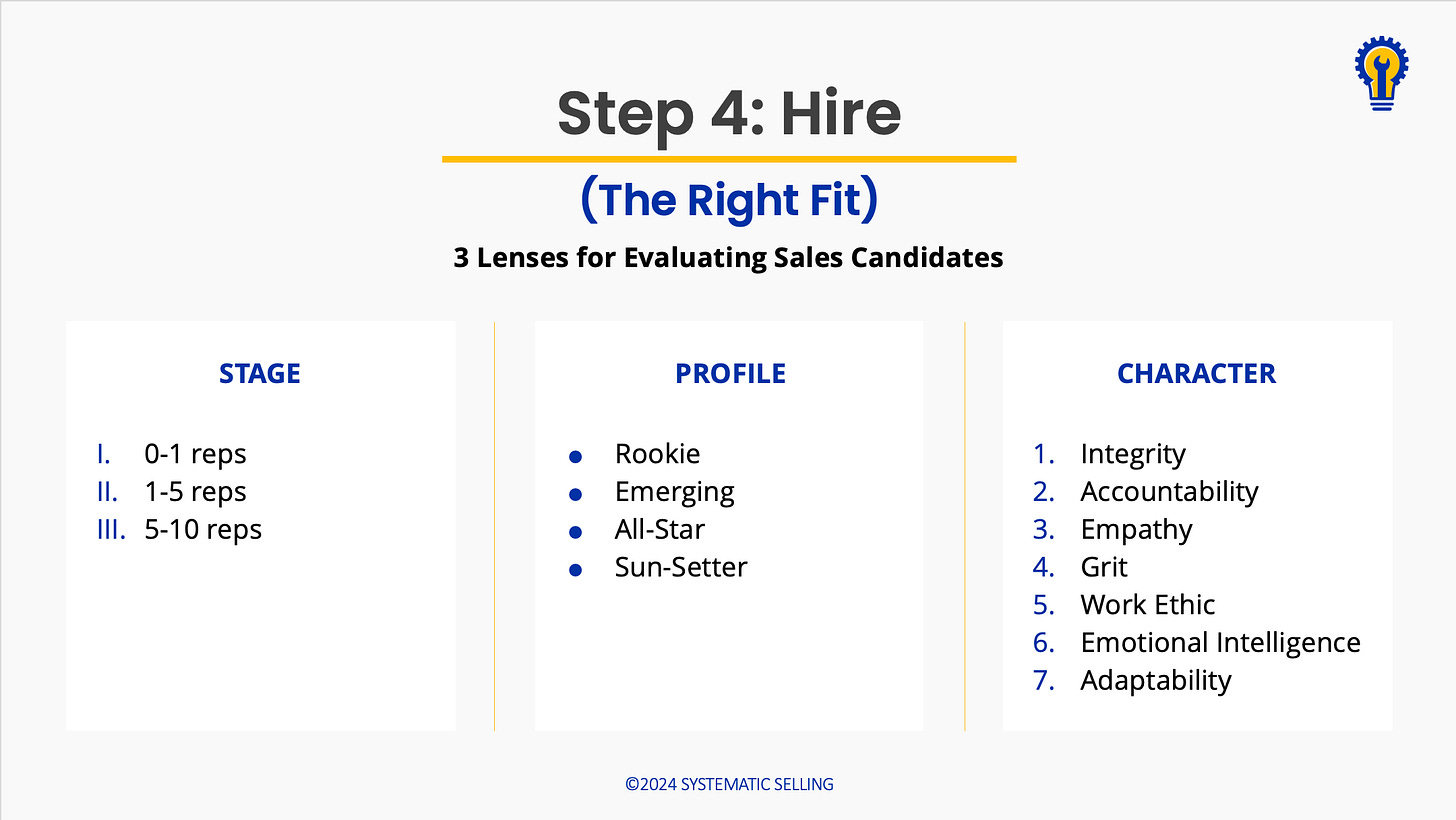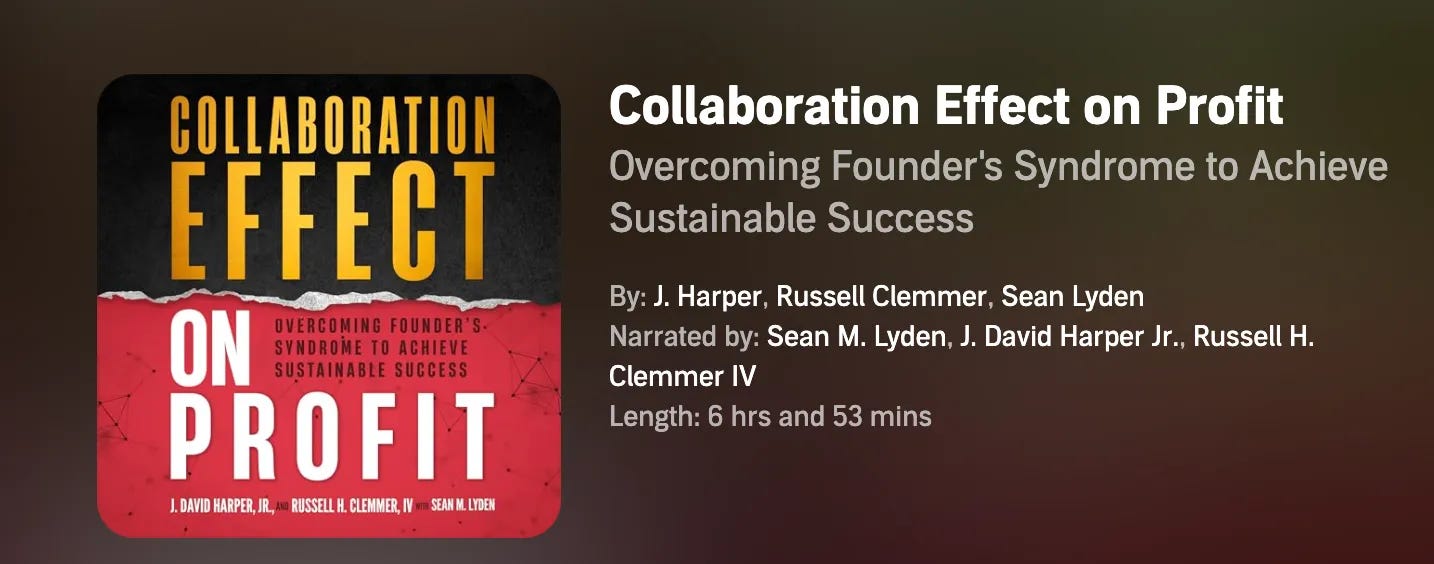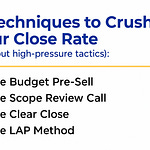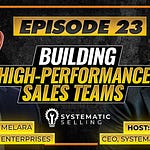Today’s episode is for you if you’re experiencing these problems:
New sales hires take too long to ramp up—or don’t stick around.
Your onboarding process is a mess—or nonexistent.
Your sales culture isn’t inspiring loyalty.
New to Systematic Selling?
Subscribe for free to receive bite-sized, high-impact sales systems training delivered to your inbox each week.
Upgrade to Paid for the full experience, including access to the entire archives and premium-only sales training content, for a Venti Latte ☕️ per month.
Today, on Episode 27 of the Systematic Selling Podcast…
My talk on “‘Sink or Swim’ is Not a Strategy: 7 Steps to Set Up Your Reps for Success”
Sales turnover is brutal—especially for small businesses.
It’s expensive, disruptive, and demoralizing. And if you’ve ever felt the pain of losing a key sales rep, struggling to fill the role, and dealing with a drop in revenue in the meantime, you’re not alone.
Consider these statistics:
35% - Average sales turnover rate—more than twice as high as any other role
47% - Sales reps who leave citing poor onboarding and training
200% - Estimated percentage of a sales rep's salary it costs to replace them
44% - Sales reps planning to leave their job within two years
10+ months - Time it typically takes for a new sales rep to become fully productive
18 months - Average tenure of a sales rep.
I've seen this play out countless times with companies. They invest considerable time and resources to hire a sales representative, only to see that person walk out the door within 18 months. This means you might only get eight months of true productivity after all that investment.
So how do we break this cycle?
I've developed a seven-step cycle to slow the churn and accelerate your organization’s transformation into an elite sales team.
Let me walk you through it.
Step 1: Define Ambitious and Attainable Targets (00:02:44)
How many of you have left a strategic planning meeting thinking, "They're smoking crack—there's no way we're hitting those numbers"?
The problem is that goals are often disconnected from reality, specifically from the true price tag of the strategy and resources needed to achieve them.
This disconnect creates unrealistic targets that demoralize your sales team, leading to burnout, resentment, and eventually turnover. The key is to ground your goals in reality.
Try this strategic planning agenda for sales:
Debrief: Determine your current state—revenue, gross profit, and margin. How do these numbers stack up historically? Any records set? How do revenue streams rank by percentage? Who are your top clients?
Forecast: What are your projected revenue, gross profit, and gross margin targets? What assumptions underlie these numbers? What quarterly milestones should you establish to track progress?
Strategy: Ask this money question: "Imagine 12 months from now, we've hit our forecast. What will we have done to make that happen?" This question taps into the persuasion principle of thinking past the sale, helping everyone visualize success.
Team: Assess your current sales team size and composition. What's your sales turnover rate? What are your team's most notable strengths? What skill gaps need to be filled to hit your forecast? Are you ready to hire more reps?
Resources: Does your team have the tools they need to succeed? Consider technology, marketing support, industry events, training, and coaching investments. Ask, “What haven't we considered that we should?”
Action: Define immediate steps, responsibilities, and deadlines. Schedule a follow-up meeting to maintain momentum—what I call the "this meeting, next meeting" principle. Never break the chain.
The goal isn't ironclad targets but getting initial targets out of your head and into a discussion with your team to sanity-check them.
Step 2: Audit Your Sales Systems (00:10:45)
Once you've defined targets and set your strategy, identify vulnerabilities in your sales systems that could hinder you from hitting your mark. There are 10 integrated systems that drive sales success, and if any of them slow down or grind to a halt, your entire operation suffers.
Step 3: Fix Your Broken Systems (00:12:22)
After your systems audit, prioritize which issues would make the biggest immediate impact if addressed. You can't tackle everything at once, so focus on the critical few that will move the needle. Test the fix and then document it in your sales playbook.
One of the biggest mistakes I see owners make is hiring a rep and expecting that person to solve all their sales problems. That's not how it works. Fix your sales systems first. Then hire more new reps to help you run and optimize those systems.
Step 4: Hire the Right Fit (00:12:48)
I recommend evaluating sales candidates through three lenses:
Lens 1: Company Stage
Stage One: Founder-led sales
Stage Two: Founder-managed sales
Stage Three: Specialized roles (VP Sales, Sales Manager, SDR)
Lens 2: Candidate Profile
Rookie: No bad habits, relatively inexpensive, but lacks experience
Emerging Star: Some experience but hasn't hit their prime
All-Star: Making bank where they are, which means you'll need to pay top dollar
Sunsetter: Looking for higher base compensation rather than commission upside (a red flag)
Lens 3: Character
The mantra I drill into my clients: Hire for character, train for success.
If you get the character right—grit, emotional intelligence, work ethic—you can mold and shape them.
But how do you get at the truth in interviews?
Avoid standard questions like "What's your greatest weakness?"
Instead, draw candidates out with scenario-based questions. For example, to assess integrity, ask: "Describe a situation where you had to deliver bad news to a customer. How did you handle it? What guided your approach?"
Step 5: Formalize Your Onboarding and Training (00:18:00)
Consider these statistics:
10 weeks is the average training requirement for a newly hired sales rep.
Teams that invest in sales training are 57% more effective than those that don't.
And 94% of reps would stay longer if the business invested in their careers.
Proper onboarding starts before day one. Prepare everything in advance and contact the new hire a day or two before they start with a warm welcome. This small act of kindness goes a long way.
Then, make those sales reps feel like kings and queens in public. Announce them to your customer lists and on LinkedIn. Encourage team members to welcome them in the comments. This doesn't take much time but sets a powerful tone that says, "We value you."
For training, I've identified 17 areas crucial for B2B sales reps, starting with your company's vision, mission, and values—why you exist, what's important to you as a company.
Think of training delivery on three levels:
Classroom: Learn the concept
Application: Put the concept into action
Debrief: Provide feedback to make adjustments
For rookies, think about where you can slot them in immediately to bring value. Could they start as sales support or an SDR, freeing up experienced reps to focus on closing? This approach allows them to bring immediate value while developing their skills.
Step 6: Instill a Learning Culture (00:26:00)
Create an environment of continuous improvement through:
Weekly tactical meetings
Book discussions
An on-site library
Access to online training
Reading trade media covering your customers' industries.
Step 7: Coach for Ongoing Success (00:26:29)
Training is not a set-it-and-forget-it program. Meet with your reps regularly and coach effectively during one-on-ones.
I recommend a Socratic approach rather than being prescriptive.
For example:
When a rep asks, "What should I do about X?" resist the temptation to immediately say, "You should do Y and Z."
Instead, ask, "What does your gut instinct tell you?"
If their answer makes sense, say, "Sounds like you have your answer. What's holding you back?"
If their answer is off course, don't say, "That's a stupid idea." Ask, "How do you see that playing out?"
The Socratic approach guides them to discovery so they own the action they need to take.
A typical coaching agenda I follow includes:
End Zone: Wins (debrief successes)
Red Zone: Pending proposals (getting deals over the line)
Pipeline: Prospects and discovery meetings
Prospecting: Lead generation
Conflict Resolution: Mismatched expectations, invoice disputes (00:28:00)
The Vince Lombardi Example
Vince Lombardi was hired by the Green Bay Packers in 1959 after they had suffered 10 straight losing seasons. In his first team meeting, he said, "I have never been on a losing team, gentlemen, and I do not intend to start now."
Unlike today's NFL, Lombardi couldn't easily change players through free agency and trades. He had to work with the "losers" he inherited.
Yet he turned them into winners, leading the Packers to five NFL championships, including the first two Super Bowls.
That team of "losers" would produce nine NFL Hall of Famers.
As Packers.com described it, "Lombardi immediately changed the way the team looked, the way it played, and especially how it thought."
I share this story because it demonstrates how just one person can transform the culture and performance of an entire team. No matter how long you've been in your role or how well your sales team performs, you can flip the switch to transform your sales team into a finely tuned, high-performance machine.
My Challenge to You
In Atomic Habits, author James Clear says it best: “You do not rise to the level of your goals. You fall to the level of your systems.”
So, follow the 7-step cycle to build your sales systems that rise to the level of your highest ambitions 👊
Listen to Episode 27 for the full breakdown.
Our Book is Now on Audible👇
Today’s episode is brought to you by our new book, Collaboration Effect on Profit: Overcoming Founder’s Syndrome to Achieve Sustainable Success—now available on Audible.
Sean M. Lyden is the founder and CEO of Systematic Selling, a sales systems and coaching company for growth-minded SMB founders and owners looking to scale their sales (without the chaos).




















